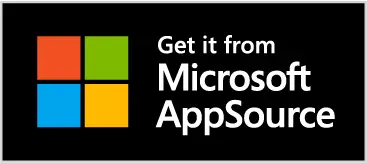These are genuinely difficult times, even for an industry that tends to go from boom to bust with nothing in between. Very few black swan events have impacted an industry in the same way that COVID-19 has affected the travel business and overall aerospace industry.

The last black swan event I experienced was the 9/11 attacks, which coincidentally occurred on the same day we launched Net-inspect at the ASQ conference in Seattle. The organizer called me that morning to ask if I wanted to cancel, and I told him, "Absolutely not." As it turned out, we saw overflow attendance for the launch because none of the delegates could go anywhere.
Many times in life, your best course of action will seem counterintuitive. During major upheavals, one's natural inclination is to hunker down and wait until the storm passes. Unfortunately, following that philosophy will prove disastrous in navigating the COVID outbreak: this storm is going to last for a number of years, and things may never go back to what we consider normal.
So, what to do? Since there is no way an aerospace supplier can operate the same way they did pre-COVID, companies must be reengineered to use the most advanced technology available.

All processes, as well as their interactions with employees, will have to be examined under a microscope. This is not the time to be shy about asking all employees, especially senior management, "What monetary contribution do you make to the company each day?" If the company is going to survive and prosper, then nothing can be treated as sacrosanct, and no areas should be spared from detailed scrutiny. A great place to start is your "corrections departments," those areas in the company which are home to people who check and monitor other people's departments to ensure they have done their work correctly.
The most obvious example is inspection. There may be many other examples of departments of correction at a given company, but we will focus on production inspection and receiving inspection.
At the heart of every receiving inspection department rests a contradiction: If our suppliers are good and reliable, then why are we making sure that everything they ship has been manufactured correctly? Ostensibly, the suppliers should be responsible for ensuring this. In a booming economy, it's a seller's market, and companies must put up with poor quality, including missing or incorrect paperwork. But it is now a buyer's market, and companies have the right to expect excellent quality from each shipment, and to not be forced to pay additional costs for their own receiving inspection. Everything should be checked before shipment and easily quarantined in the event of an escapement, a simple process for companies using Net-Inspect's electronic source inspection software. This will not eliminate receiving inspection entirely, but it will significantly improve efficiency and reduce the number of people needed in that department.

The same principles apply to production inspection. If a manufacturing process is proven to be under control, then checking that it is under control via inspection does not produce any value. The presence of this safety net even reduces the amount of care and scrutiny paid to the manufacturing process, because the employees involved know that someone else will catch the problem before it affects the customer. Inspection becomes a self-licking ice cream cone, justifying itself with the argument, "Of course we need inspection! Just look at all the problems that the other departments left for us to find!"
Much of this inspection can be eliminated through effective statistical process control tool (SPC). If, for example, measurement inspection were only carried out on features that have a CPK of less than 1.33, then the amount of inspection would be reduced significantly. In aerospace, lot quantities are relatively small, perhaps 2 pieces per ship set. Assuming 20 ship sets a month (480 parts per year), if all key features have a CPK of 1.33, then there will be one defect in each feature every 33 years. SPC is a major cost-saver even when shipment volumes are a lot smaller. The current moment is actually the best time to incorporate technology improvements: employees have time available to implement them, and the resulting savings will impact the bottom line immediately.
All company functions that don't add value will need to eliminated, and true lean processes must be implemented. The whole company will need to be reengineered to produce profitability at much lower volume. This cannot be accomplished unless fundamental processes are improved and the most advanced technology is incorporated into every facet of the business.
Contact our team today at sales@net-inspect.com or +1 425-233-6176 to learn more about how you can use Net-Inspect to effectively monitor process capability and use your data to reduce inspection without added risk of defects.

